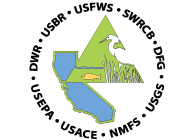 From the Interagency Ecological Program’s Science Stories: Adventures in Bay-Delta Data:
From the Interagency Ecological Program’s Science Stories: Adventures in Bay-Delta Data:
“Lots of Interagency Ecological Program (IEP) scientists research fish. Of the 22 surveys in IEP’s Research Fleet, 17 are primarily focused on fish. But fish in the San Francisco Estuary are hard to catch these days. Over the past thirty years, Delta Smelt, Longfin Smelt, and even the notoriously hardy Striped Bass have declined precipitously (CDFW FMWT data).
To figure out how to reverse these declines, we need an understanding of the “bottom-up” processes that exert control on these populations—we need to study fish food. Therefore, we need to increase our understanding of what pelagic fish eat: zooplankton. If you’ve spent any time around fish people, you’ve probably heard the word “zooplankton”, but you might not really know what it means. Zooplankton are small animals that live in open water and cannot actively swim against the current (“plankton” means “floating” in Greek).
They include crustaceans (copepods, water fleas, larval crabs, etc.), jellyfish, rotifers, and larval fish. Most of them are hard to see without a microscope, so they are easy to overlook – but you’d miss them if they weren’t there because most of your favorite fish rely on zooplankton for food. Fortunately, the IEP Zooplankton Project Work Team has been tackling the problem head-on.
Click here to continue reading from the IEP.


